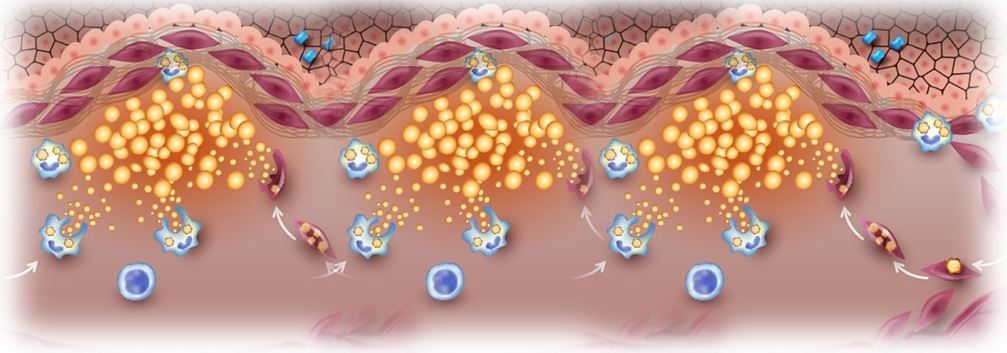- Clinical Technology
- Adult Immunization
- Hepatology
- Pediatric Immunization
- Screening
- Psychiatry
- Allergy
- Women's Health
- Cardiology
- Pediatrics
- Dermatology
- Endocrinology
- Pain Management
- Gastroenterology
- Infectious Disease
- Obesity Medicine
- Rheumatology
- Nephrology
- Neurology
- Pulmonology
Study: HDL Anti-inflammatory Capacity Could Improve CVD Risk Assessment
The indicator of vascular protection against atherosclerotic progression was inversely associated with incident CV events, independent of traditional CVD biomarkers and improved Framingham Risk Score prediction.

The anti-inflammatory capacity of high-density lipoprotein (HDL) was found inversely associated with incident cardiovascular (CV) events in a study published online April 12, 2021 in the journal Circulation.
The association was independent of HDL cholesterol and HDL cholesterol efflux capacity and there were very limited associations with other established CVD biomarkers, leading authors to suggest that HDL anti-inflammatory capacity may help improve current CVD risk assessment tools.
“The HDL cholesterol level is a good, established, simple and cost-efficient CVD risk biomarker," said senior study author, Professor Uwe Tietge at the Department of Laboratory Medicine, Karolinska Institutet, Sweden, in a press release. "Our results, however, demonstrate that the anti-inflammatory capacity or assays looking at HDL function in general have the potential to provide clinically relevant information beyond the static HDL cholesterol measurements that are currently used.”
Population-based cohort
Participants included 680 adults (average age 59 years, 70% men) participating in the large population-based PREVEND study (N=8592) in the Netherlands, initiated in 1997. All participants were healthy at study enrollment.
From the larger study participants were identified who had experienced a first CVD event (combined end point of death from CV causes, ischemic heart disease, nonfatal myocardial infarction and coronary revascularization) during a median of 10.5 years of follow-up. Based on availability of blood samples to allow assessment of HDL anti-inflammatory capacity in 357 original controls and 352 cases, 340 matched case-control pairs were included in the current analysis. Controls were matched based on age, sex, smoking status, and HDL levels.
Among laboratory values examined were total cholesterol, LDL cholesterol, triglycerides, apolipoprotein A1, apolipoprotein B, anti-inflammatory capacity, and cholesterol efflux capacity.
HDL anti-inflammatory capacity was determined as its ability to suppress expression of tumor necrosis factor α–induced vascular cell adhesion molecule-1 mRNA in endothelial cells in vitro
(results expressed as achieved percent reduction by individual HDL related to the maximum TNFα effect with no HDL present).
Investigators found:
- HDL anti-inflammatory capacity was lower among patients experiencing a first CV event vs controls (27% vs. 31.6%; P<.001).
- In a fully adjusted model, HDL anti-inflammatory capacity was inversely associated with incident CVD (odds ratio [OR] per 1 standard deviation [SD] = 0.74; CI, 0.61-0.9; P= .002); the association was similar for individual components of the CVD endpoint.
- HDL anti-inflammatory capacity was not correlated with cholesterol efflux capacity (r= 0.02; P>.05).
- In a fully adjusted model, both HDL anti-inflammatory and cholesterol efflux capacity were independently associated with incident CVD (OR per 1 SD for efflux = 0.74; P=.002; OR per 1 SD for anti-inflammatory capacity = 0.66; P<.001)
- Adding HDL anti-inflammatory capacity to the Framingham risk score improved its predictive ability, with a model likelihood-ratio statistic increase from 10.5 to 20.4 (P=.002).
“It is notable that the HDL anti-inflammatory capacity was independent of a large number of established cardiovascular biomarkers” including high-sensitivity C-reactive protein, the researchers wrote.
“Our results point to new opportunities for improved cardiovascular risk assessment by using a biologically meaningful functional biomarker for HDL instead of its cholesterol content,” said Tietge in the statement. “However, the method for analysing the anti-inflammatory activity of HDLs is currently rather complex and difficult. Our next goal is therefore to make the method simpler and more clinically implementable.”
Among study limitations acknowledged by the authors was the all-White composition of the PREVEND cohort, which limits generalizability of the findings. They also note that stroke was not included as a primary endpoint. Because of the study’s case-control design, there is limited ability to investigate the association of the HDL anti-inflammatory capacity with other known CVD risk factors. Also, HDL function assays are not yet standardized, so interpretations can be made only in the context of the assay conditions applied.
